Introduction Continue reading “Harvey HeyTrainer Foundation: Houston Players Coming Together!”
Author: HeyTrainer
Player Interview: Diego Cassiraga (Español)

Prólogo + Historia
Bienvenidos, entrenadores! Soy John y ahora mismo estoy entrevistando un viejo amigo, y el campeón del mundial – DIEGO CASSIRAGA!
KETTLER: Cuando empezaste a jugar Pokemon?
DIEGO: Juego Pokemon desde el 2001 mas o menos, pero desde el 2005 que se juega competitivamente en Argentina. Y salvo dos o tres temporadas que estuve un poco alejado, generalmente jugué todas.
KETTLER: Además de tu victoria en el torneo del mundial, cuales son tus otros logros?
DIEGO: 5 veces campeón nacional de Argentina + 2 veces top 4 Nacional Argentina, 2007 top 8 del Mundial, 2009 top 8 del Mundial, 2017 Internationals LATAM top 8, gane el Regional Argentina 2017 y obtuve el 3er puesto en el Regional de Chile 2017.
KETTLER: Eres un viejo como yo! Cual es tu formato favorito? Por qué? Que piensas con respecto a este formato? (Este formato = el formato del Mundial.)
DIEGO: Si, jaja, viva la vieja escuela! En mi recuerdo, en los formatos más viejos (2007-2009) la habilidad prevalecía sobre la suerte. En los últimos años el factor suerte incidió mucho en el resultado, pero en los últimos meses, incluyendo el formato actual, la habilidad vuelve a ser el factor más importante.
El Mazo

KETTLER: Yo estudie tu mazo antes de este entrevista. Cuales fueron tus motivaciones para jugar 2-1 Octillery, 1 Diancie, y 1 Alolan Vulpix?
DIEGO:
Diance: sentía que era muy bueno contra Deciplume, y Ninetales Decidueye, pero al no tener float stone en el mazo, muchas veces tardaba demasiado en usarlo para armar mi juego. Ahí es donde entra en acción Alolan Vulpix. Si empiezo yo, trato de usar Diance, uniendo energía para atacar en el segundo turno. Si empieza mi oponente, mi plan de juego se basaba en Vulpix. 2-1Octillery me parece el numero perfecto. 2-2 es demasiado y 1-1 es muy poco lol
KETTLER: Hay alguna carta que crees que te ayudó más que otra? Osea, una Estrella.
DIEGO: Alolan Vulpix, y en segundo lugar Gallade.
KETTLER: Que piensas con respecto al mirror — jugando en contra de otros Gardevoirs?
DIEGO: Contra mirror, usaba Acerola y ayudaba mucho tener un set up rápido. Por eso mi mazo tenía 3 Kirlia, para poder usar los rare candy después del Acerola
KETTLER: Me gustaban los tres Kirlia. Que piensas con respeto a Hex Maniac?
DIEGO: Lo puse para jugar contra mirror, Greninja, Volcanion, Decidueye. Muchos mazos dependen de sus abilities para poder devolver el golpe.
El Torneo
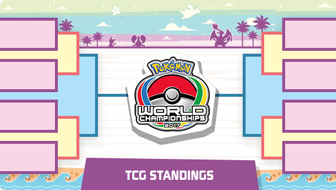
KETTLER: Hiciste alguna cosa diferente esta temporada distinto de otras temporadas? O crees que te beneficiaste gracias a un formato de habilidad? O una combinacion?
DIEGO: Yo creo que al tener los internacionales, regionales con premios económicos importantes en toda la zona, y tener que jugar muchos más torneos que antes, hizo que los jugadores, incluyéndome a mi, se mantengan más activos durante toda la temporada. Eso me ayudó para el mundial. En temporadas anteriores, mi último torneo importante en argentina, antes del mundial era el nacional en mayo. Había mucho tiempo inactivo, sin torneos importantes.
KETTLER: Entonces viajando a todos partes para jugar Pokemon
DIEGO: jaja, la combinación perfecta, viajar y jugar pokemon
KETTLER: Dame un reporte rápido de tu torneo. Con quien y que jugaste? Con quien tenias los juegos más difíciles durante el torneo?
DIEGO:
Ronda 1 vs decidueye/ninetales WLW
Ronda 2 vs waevile,golisopod/koko/espeon ex WLW
Ronda 3 vs golisopod/garbodor whit rainbow (naoto susuki) LL
Ronda 4 vs golisopod/garbodor sin rainbow LWW
Ronda 5 vs volcanion WLW
Ronda 6 vs golispod/ garbodor sin rainbow (streaming) WW
Ronda 7 vs espeon garbodor WW
Ronda 8 ID
Top 8 vs gardevoir WW
Top 4 vs espeon garbodor WW
Final vs Golisopod/garbodor con rainbow WW
Mis juegos mas dificiles eran en contra de Naoko Suzuki. La Ronda segunda también fue complicada.
KETTLER: Por que complicada?
DIEGO: Tapu koko+Weavile+ Golispod = mucho daño por pocas energías, y despues Espeon EX terminaba el partido.
KETTLER: Pero aun con eso encontraste una respuesta, verdad? Sospecho que Acerola te ayudó mucho.
DIEGO: Los 3 Kirlia, Acerola, y la Wonder Energy.
KETTLER: Pero a pesar de todo, eres el campeón del mundial! Dime exactamente como te sentías en la plataforma con los otros campeones – que pasaba por tu mente?
DIEGO: jaja no lo podría creer, no caigo todavía, ver la ceremonia de cierre, pero esta vez del otro lado!! me venía eso a la cabeza, con las luces y todo, no se ve el público, y pensaba eso, hoy estaba yo de ese lado.
Misceláneo

KETTLER: Que haces cuando no juegas cartas de Pokemon? Trabajo, otras actividades, y ya?
DIEGO: soy bibliotecario escolar en 2 escuelas y tengo un bar.
trabajo en la biblioteca de 2 escuelas primarias
KETTLER: Que wey! Puedes mandarme una foto de tu bar?
DIEGO: Es un Ruby Tuesday – https://www.facebook.com/rubytuesday.bar
KETTLER: Es bien padre que juegas y viajas con tu esposa. Muchas felicidades para tu familia nueva – conociste a Maia por Pokemon, o ella entró al juego por ti?
DIEGO: Muchas gracias!! Trate de que ella jugara, jugó algunos torneos, pero le gusta mas darme ordenes, digo ser jueza jaja. y empezó su carrera de jueza, y es mucho mejor jueza que yo jugador jajaja creo q yo la sigo a ella a los torneos jajajaja.
KETTLER: Como ustedes mantienen conflictos de intereses cuando ella esta juzgandote? Hay otro juez en esas situaciones?
DIEGO: generalmente hay otros jueces, y ella por lo general no juzga mi mesa cuando es posible, igual casi nunca llamo a un juez o algo, no es algo normal en mi juego. ella siempre dice que por suerte no le doy problemas. ☺

KETTLER: Cual es la fecha de parto del bebé? Tienes planes hacerlo/hacerla un campeon tambien? 😛
DIEGO: jajaja 30 de Septiembre. Es un varon, primero tratare que sea jugador como el papa jajajaja.
KETTLER: Muchas gracias, Diego!
Highlights of Anaheim: Analysis of the Top Eight Masters’ Decklists
-HeyTrainer.org: In-depth analysis and competitive content for the Pokemon Trading Card Game-

Introduction
Congratulations to the top finishers of this year’s World Championships! 2016-2017 will go down as one of the most momentous, eventful seasons ever, so a bit of reflection on the big show would be worth all of our times. Today I’ll be looking over the top eight decks, with emphasis placed on in-depth analysis of the three archetypes that shined the most.
Let me be clear: Despite Standard rotating, these results and deckbuilding principles are still 100% relevant to the 2017-2018 season! Worlds may be over, but Ft. Wayne is in less than two weeks, and the Standard season is about to kick off with Connecticut Regionals. Therefore, the constant year-round Pokemon TCG season makes it essential to develop good deckbuilding principles and metagame reads.

Gardevoir GX
Diego Cassiraga 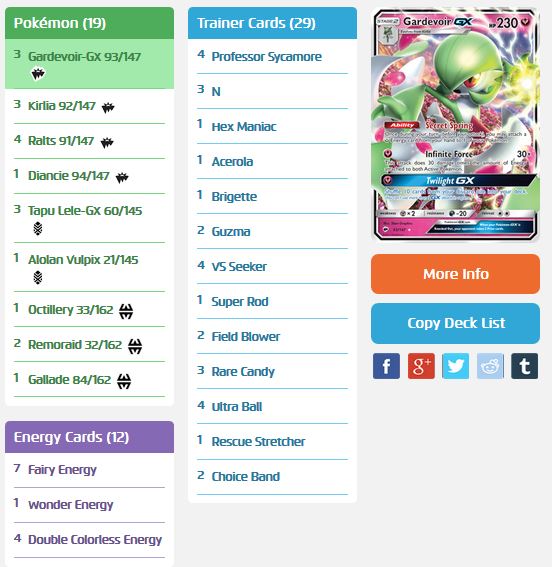
Pablo Meza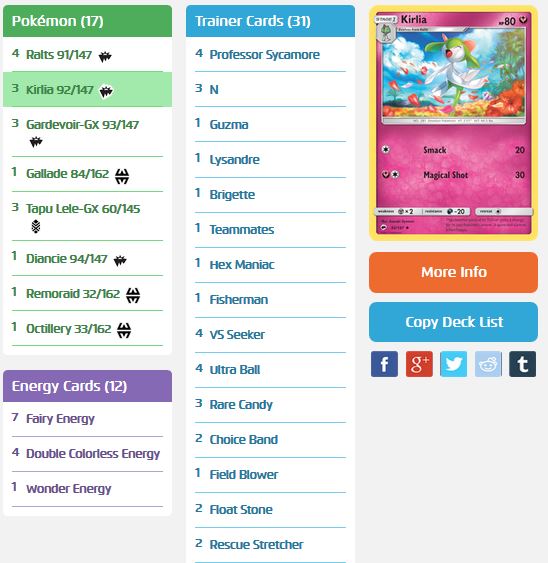
Overall Impressions: Going into Worlds I felt bullish about Gardevoir GX’s day one prospects, but less confident in its Day Two hopes. While the results of Worlds Day One informed the Anaheim Open competitors well enough to keep Gardevoir from winning that event, in Day Two it successfully brought home $30,000 to Latin America, placing 1st and 7th respectively.
If you’re a big HeyTrainer blog fan, you’ll notice that Diego’s list looks pretty similar to the sample build we posted last week. However, the six cards’ difference are actually very important, and communicate to me a veteran who perfected is winning deck.
Gardevoir Line: Diego runs a thick Gardevoir/Gallade line, as have other lists. This is to guarantee that he gets out two or more Ralts line Pokemon by the third turn. It’s also a metagame decision because of the prevalence of Vileplume AOR and to minimize the number of items used against Garbodor GRI decks.
2-1 Octillery, 1 Diancie, 1 Alolan Vulpix, 3 Tapu Lele GX: I’ll analyze all of these in a group because I think this is the key to what makes Diego’s championship-winning list superior to our sample list.
When constructing a finalized deck list, players seek to build something that has the most outs to bad hands as possible – and by “bad hands” I mean unplayable ones. Here, Diego runs four immediate outs through his Pokemon alone, and when combined with his full Trainer line runs a cool 16 outs: 3 Tapu Lele, 1 Alolan Vulpix, 7 draw Supporters, 1 Brigette, and 4 Ultra Ball. Start piling on the cards you can’t always use instantly but are still helpful, such as Diancie/Gallade/Octillery, and you’ve got what’s sure to be a consistent, fun Worlds deck to buy in a couple months.
One difference between this list and others is Diego’s 2-1 Octillery line. I like this over a thick 2-2 or a 1-1 because the 2-1 is less space, yet at the same time far more reliable than a 1-1, which is much more prone to be prized. I believe a 2-1 line was the best call in hindsight.
Pure Guzma over Lysandre/Guzma split: Although I was mostly an advocate for pure Guzma over the Lysandre/Guzma split, which turned out to be the correct call, it’s in this single deck where I did not make that decision. Diego did however, and for all the consistency additions, it makes sense not to want three luring effects.
Acerola: Acerola became an essential tech in Gardevoir builds, and in my mind is probably what gave Gardevoir players wiggle room against the normally difficult Decidueye matchup. It’s also a great choice in any Gardevoir build for either Standard or Expanded because it encourages swarming while also protecting resources.
Wonder Energy: Wonder Energy is an example of a card that probably made a big difference in early rounds, but became less impactful as the event progressed. In my opinion it works better in a list like Pablo’s with Teammates, whereas in Diego’s list you’re sort of forced to just draw into it at the right moment. There’s a calculated risk involved in that, such as running a singe Field Blower in Decidueye, but expect it to not help as much most games. However, in Expanded I’d expect it to be much more reliable, as everyone and their mother runs Computer Search.
Overall Differences between Diego’s and Pablo’s Lists: Both lists are world-class, yet they each stand for two sides in the classic war between consistency and teching. In Pokemon, where you can’t change your cards between games, every choice counts, and as a result you see an interesting situation where the most consistent and best-teched concepts usually rise to the top. There’s no clear answer which is better, but in a one-event format such as Worlds, where the Gardevoir GX mirror is still relatively young, the cards that get you set up will go a long way.
Golisopod/Garbodor
Naoto Suzuki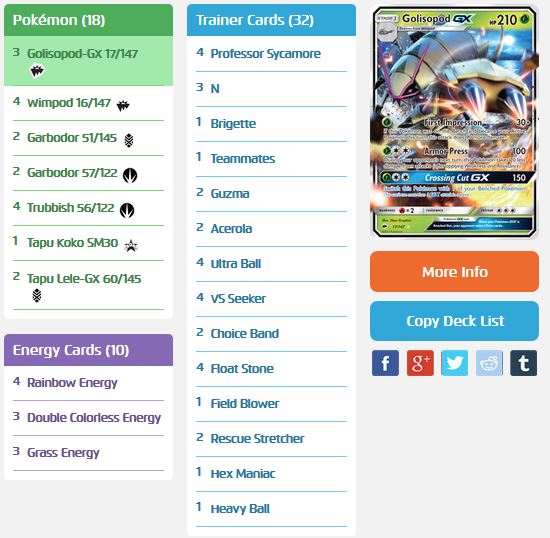
Sho Sasaki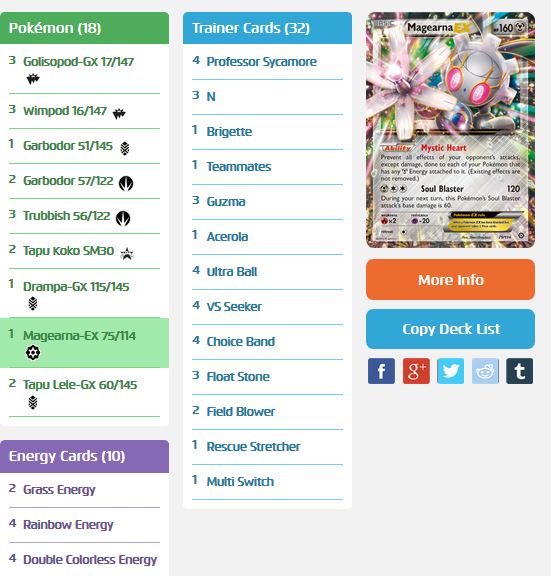
Overall impressions: It looks like I underestimated Golisopod’s chances heavily! With the most appearances of any deck in the top four and a stone’s throw away from the title, Golisopod/Garbodor is yet another strong Stage One deck in the game’s history.
Consistency vs Teching, Part Two: These two lists are remarkably similar, but for the fact that Sho’s list has more tech attackers while Naoto’s has thicker lines of the main attackers. Thick lines of primary attackers is another side to consistency, in that you minimize the number of situations where you fail to draw into an important card. I don’t know how these gentlemen’s top four match went, but I’d guess Naoto set up his Wimpods and Garbodors far more easily.
Garbodor BKP Emphasis: Despite the strength of Trashalanche Garbodor, both lists placed it in the backseat over Ability-locking Garbodor BKP. Naoko’s list also supplements his build with a Hex Maniac, helping break through turn one Vileplumes. Personally I’d like a balance between these two approaches: I like the space created by Sho’s list, but like the two Garbodor GRI and Hex Maniac of Naoko’s.
Sho’s Choice of Tech Basics: This in my eyes will be the unsung “what if” scenario of Worlds 2017. Between Garbodor GX and especially Magearna EX, Sho had a couple unique choices that could have put in a lot of work against Gardevoir – something a more streamlined build could not. Had Naoko’s list included the Magearna, or had Sho’s list been marginally better against the mirror, we might have seen a completely different World Champion.
Normal Garbodor Variants
Xander Pero
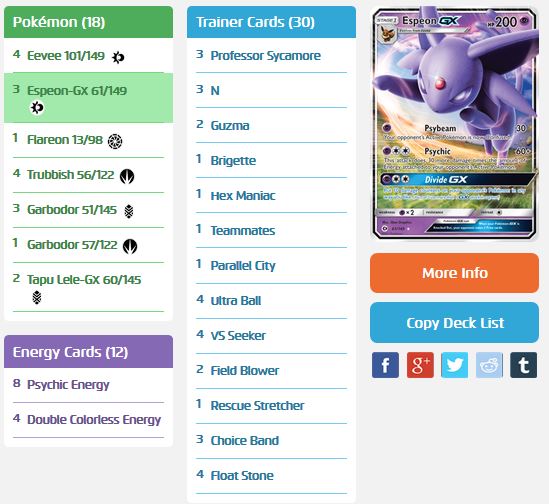
Jimmy Pendarvis
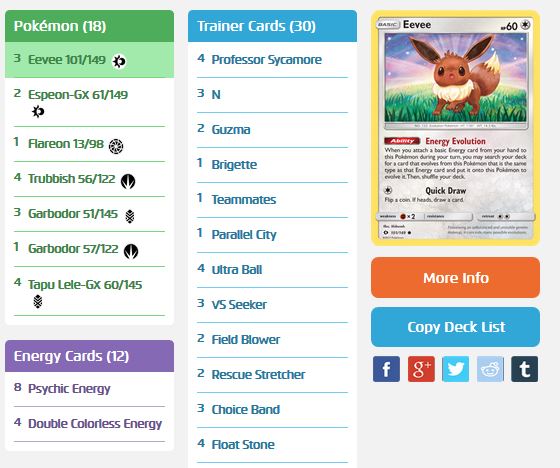
Sam Chen
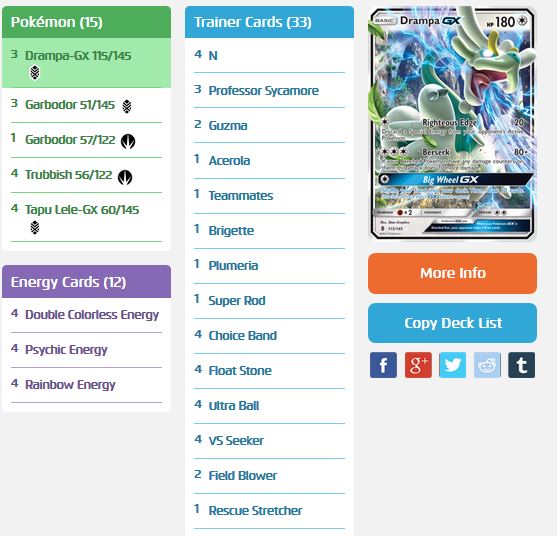
Reiji Nishiguchi
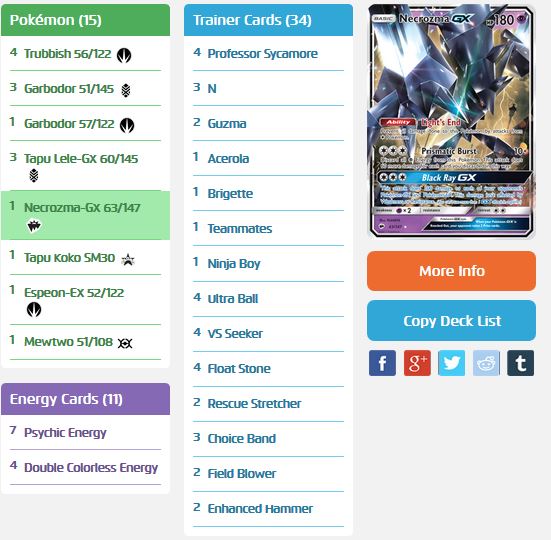
Overall Impression: In my “Big Five” article last week, I predicted that if Garbodor benefited from heavy use and favorable metagame matchups, it would do well. I was more or less right about this prediction, although after talking with Sam, Xander, and Jimmy, each of their schedules featured some very unusual decks – namely the surprise Salazzle GX/Ho-Oh X and Golisopod GX/Garbodor builds. Xander was even paired down to a M Scizor deck, which is surprisingly good when considering Xander runs a Flareon AOR to change his Pokemon’s typing to Fire.
I distinguish these decks from the Golisopod builds because Trashalanche is only a side focus there. But considering that 3/4 of the Top Eight consisted of some sort of Garbodor presence, I underestimated its overall effectiveness on the day.
Every variant shined: Between Espeon and Drampa, as well as the “surprise” Necrozma/Tapu Koko build which saw success in Japan’s younger age groups, metagame factors helped propel all three versions of Garbodor into top cut. I think Espeon variants in particular shined because they did the best versus the emergent field, which included the above Ho-Oh, Golisopod, and Gardevoir decks: Ho-Oh and Gardevoir are at risk of Espeon GX KOs via Psychic, and Golisopod becomes Weak to Fire thanks to Flare Effect. Drampa succeeded because it was being piloted by one of the more experienced Drampa variant users, and I’m unsure what path Reiji and his Necrozma took to clinch his top eight position.
Necrozma was not quite finished: If you’ve played the video games, you can tell that Necrozma’s design is not quite complete. Similarly, the Necrozma variant feels like it is sorely lacking the Tapu Lele promo – a card which was mistakenly allowed into Day One for Japanese players but subsequently excluded from Day Two. The theory of a deck emphasizing spread damage is exciting to see come back, but without the Damage-moving mayhem caused by Tapu Lele’s Magical Swap, it’s not quite there yet.

Conclusion
The results of this year’s Worlds were quite memorable, but I doubt the lessons learned from its top finishers will be one-time things. Unlike M Audino’s here-today-gone-tomorrow victory last year, all of these decks will live on in some way for the 2017-2018 season, and I look forward to seeing what’s in store for us next. Hopefully you got something out of what these eight excellent deckbuilders did, and can apply it to your future tournaments!
(Deck list images are property of The Pokemon Company International, accessed via https://www.pokemon.com/us/play-pokemon/worlds/2017/tcg-masters on August 24, 2017. All official assets used are used exclusively for the purpose of game commentary.)
The Big Five: Favorites to Win Worlds
Introduction
In today’s one and only pre-Worlds article, I briefly highlight five decks I consider to be the “big five” of the 2017 Worlds format. With Worlds just three days away and deck lists for Day One due in two, I figured it’s either now or never to go over the kings of Standard, and give overall forecasts for each.
Deck #1: Gardevoir GX
Winner, Japanese National Championship

Sample Decklist
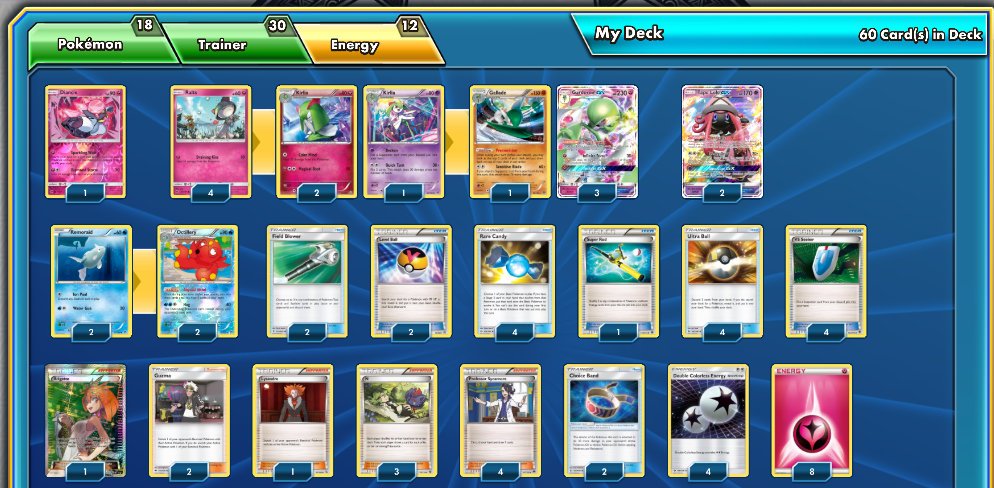
Pros: Huge damage combined with energy acceleration; has branching Evolutions with multiple options for deck construction.
Cons: Takes too long to setup.
Tech options: Wonder Energy, for Espeon EX and Espeon GX.
Overall impression: This is a good play for Day One, but has an uphill battle headed into Day Two and the Anaheim Open, which will surely be influenced by Day One results. Timing seems critical with this deck, but it is also pretty safe. Probably a good play the whole weekend even if Saturday sees hate against it.
Deck #2: Volcanion
Winner, Oceania International Championship

Sample Decklist
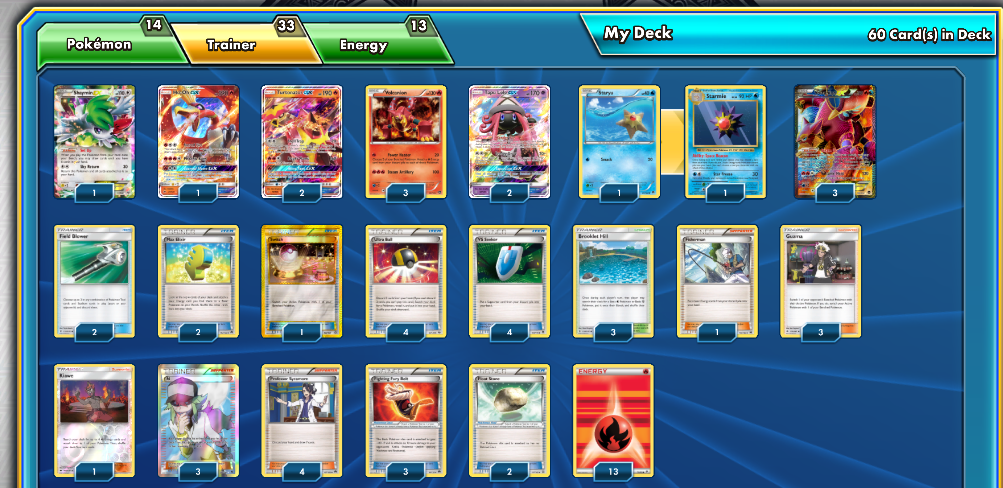 Pros: Fast; huge damage; requires the least setup of the Big Five.
Pros: Fast; huge damage; requires the least setup of the Big Five.
Cons: Linear playstyle; bad fringe matchups; somewhat inflexible.
Hot tech: Choice Band for Garde, mirror, and Garb’s big GX attackers.
Overall impression: Unlike the other four decks on this list, there’s no question it will be hugely popular in all major events at Worlds (Day One, Day Two, Anaheim Open). I’ve never liked Volcanion all that much, and I may be biased, but I only see it winning Worlds if Day Two is mostly just a Melbourne replay.
Deck #3: Decidueye
Winner, Latin America International Championship
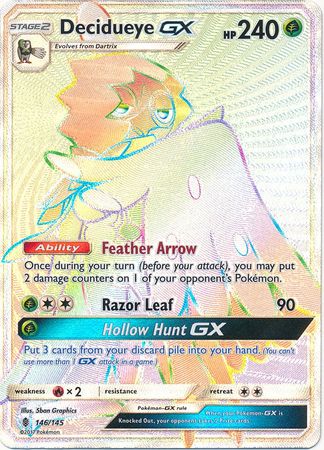
Sample Decklist
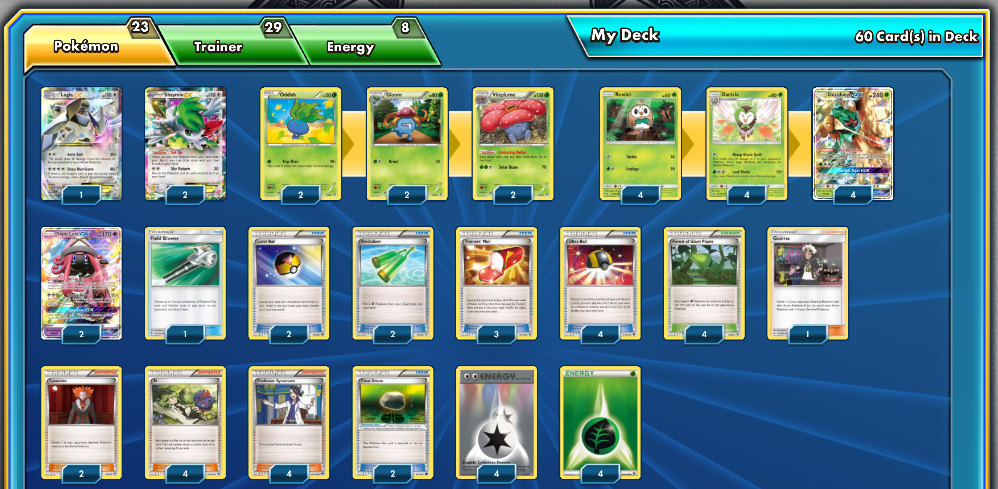 Pros: Lots of options; can lock anything out of the game.
Pros: Lots of options; can lock anything out of the game.
Cons: Inconsistent at times; crippled by bad prize combinations; trapped in the same 50-card build.
Hot tech: Jolteon EX for Volcanion. Hard to get out and vulnerable to Turtonator’s Shell Trap, but otherwise the least likely tech Volcanion would counter.
Overall impression: Would you be surprised if you saw me playing it at Worlds? I have nothing further to say.
Deck #4: Greninja
Runner-up, Worlds 2016
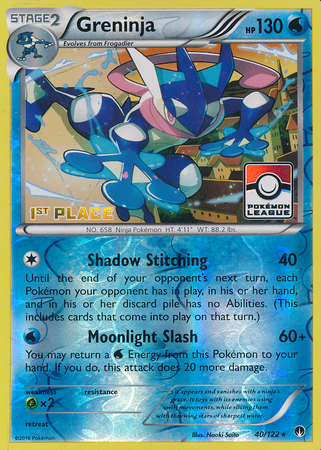
Sample Decklist
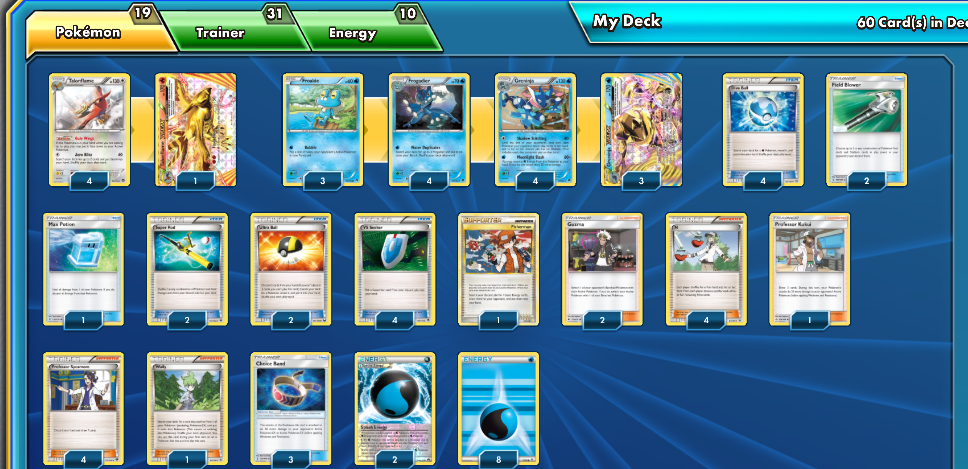 Pros: Good when it sets up
Pros: Good when it sets up
Cons: Bad when it doesn’t set up
Hot tech: Talonflame BREAK. I wouldn’t even dream of cutting it or Talonflame for Worlds.
Overall impression: Greninja is incredibly well-positioned to win Worlds a year after it lost in Finals. That said, I hope everyone runs it.
Deck #5: Garbodor
Winner, North American International Championship
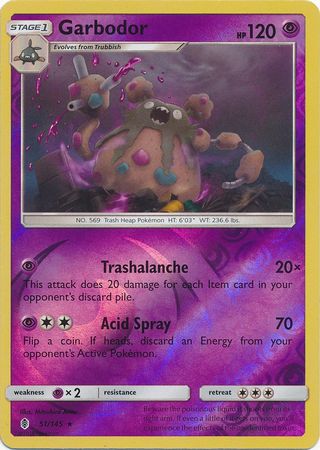
Sample Decklists
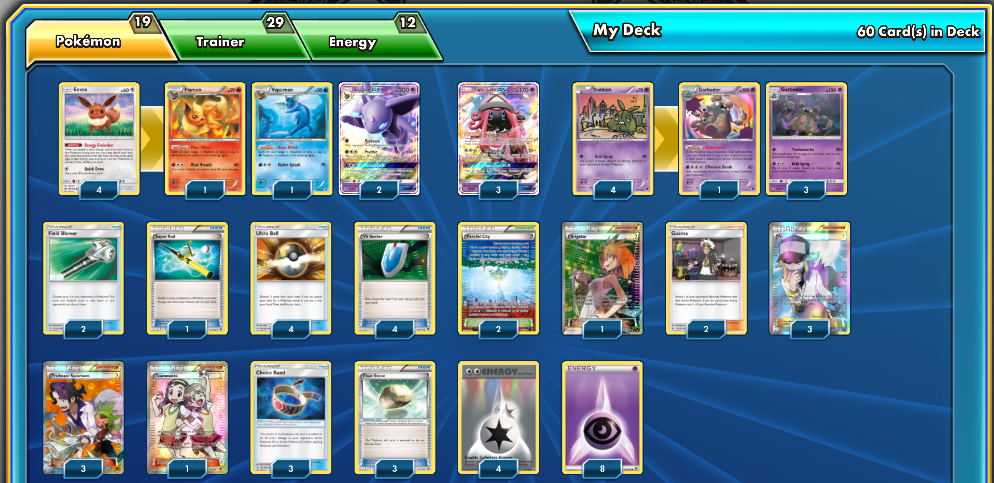
 Pros: Insane amounts of options; consistent; stands a good chance of having a good metagame in Day Two.
Pros: Insane amounts of options; consistent; stands a good chance of having a good metagame in Day Two.
Cons: Mediocre to bad matchups all over the place.
Hot tech: Vaporeon in Espygarb; any single-copy Supporter in Drampagarb.
Overall: I still think Garb is not well-positioned for Worlds, but it will overperform and maybe win if these five decks comprise 90% or more of the meta.

Conclusion
These five decks are by no means the only good decks in the format right now. Some options such as Gyarados shine for Day One, whereas others such as Zoroark can be incredible if the metagame warps in just the right way for Day Two. However, in as wide open and exciting a season such as this one, these five decks are the ones I identify as the true kings of this season, so it’s no surprise they will be the defining forces headed into Pokemon’s biggest weekend of 2017.
Social Saturdays: The Story of Steve and Aaron Wang, and a TCEvolutions Product Review
Recently, Steve Wang of TCEvolutions offered to send me his new product for review: a rather cool set of metallic damage counters and GX marker.
I offered to do a review of the product; however, in getting to know Steve better, I learned that he had an interesting journey into the game. I think his story is the sort of dismissive attitude countless Pokemon parents take, so I decided to share it with you all, followed of course by my honest product review.
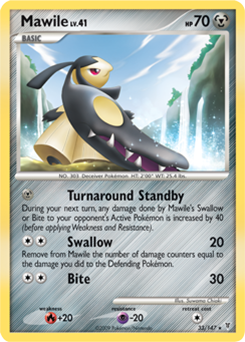
“Turnaround Standby” – TCEvolution’s Journey from Skeptic to Metallic Fanatic
Author: Steve Wang
Hello everyone, my name is Steve Wang and in case you are scratching your head right now because you don’t recognize the name or can’t remember which tournament that I top or won, don’t worry, you are correct in feeling that way.
I am not the usual pro-level players that contribute their tournament wisdom to this blog. I’m coming to you as a Pokedad whose kid recently got involved in Pokemon TCG. Our journey into Pokemon TCG led us to discover a whole community of very welcoming and helpful people, many of which we became good friends with over the past year. But I didn’t always hold this positive perception for Pokemon TCG…
Like many kids, my oldest son Aaron has been in love with Pokemon for years, and as a not-too atypical parent I was sooo against it for years. I could never understand why my son like them so much (it’s just fancy cardboard paper right?) and why he always needs more cards when he already has hundreds, possibly thousand of cards at home.

Every time when we are walking around shopping at big box stores like Target, we always spend a lot of time standing in front of the Pokemon cards section, and he almost always will find a tin box, or a theme deck that he “needs.” It’s a struggle as sometimes I cave in and buy it for him and sometimes I just have to put my foot down and say no (if you’re a parent reading this, you know exactly what I’m describing). In order to try and get this under control a bit, I told him that I will only get him more cards if he brings home good grades or if it’s a special occasion (birthday or Christmas).
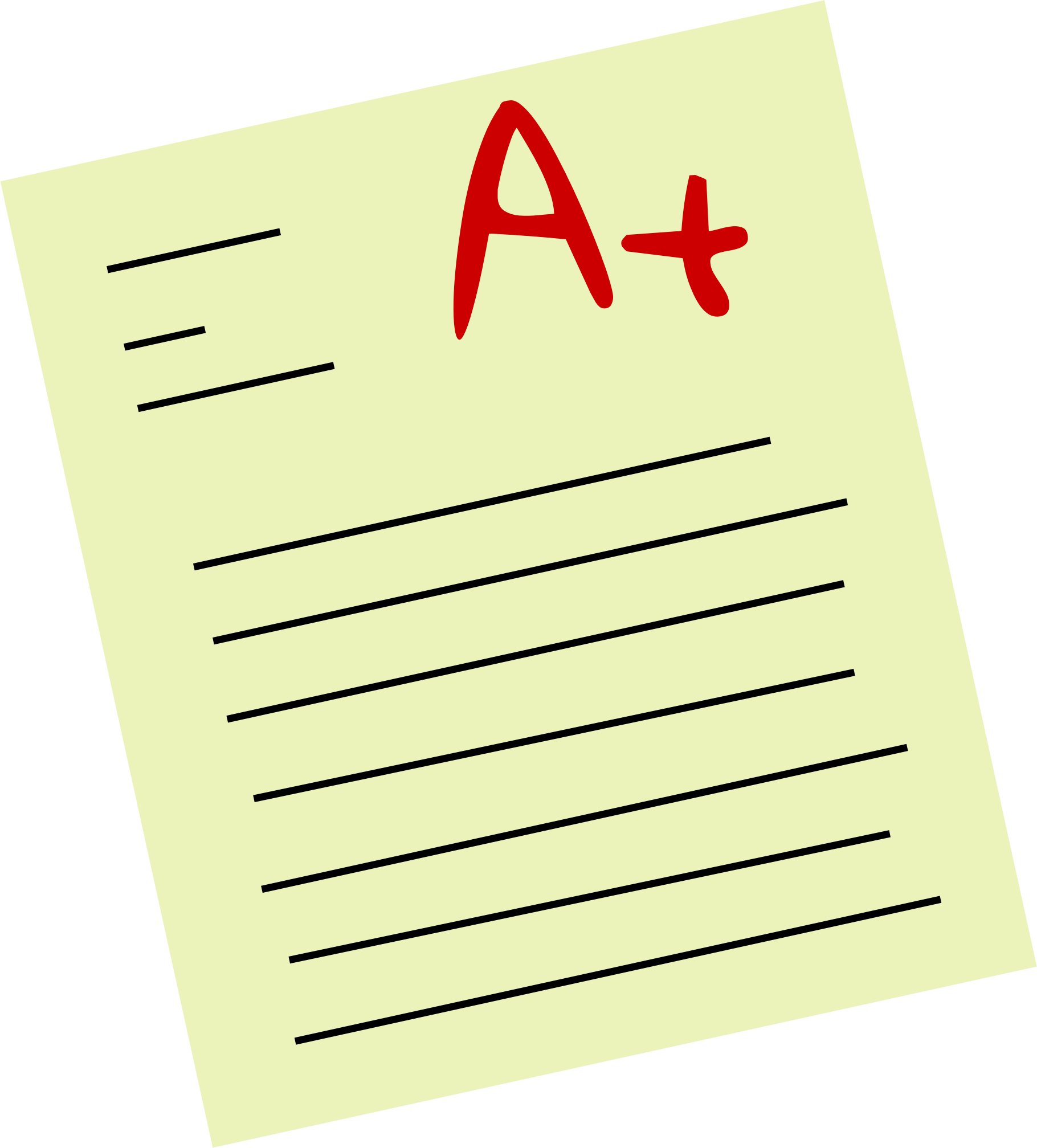
Of course, he turned out to be a great student and continuously brought home good grades, which means the cards just keep piling on. After about two years of collecting cards, my son started asking me to take him to local tournaments, and of course immediately I said, “NO!” I told him that it is bad enough that he collects the cards, but now he is actually going to waste time and go play with these cards???
(Some great parent I was…)
But one thing about my son Aaron is he is persistent and continued to ask if he can go. He even figured out where’s the closest league by navigating through the Pokemon website. In order to try and deter him, I told him I will print the entire Pokemon TCG rule book for him (I believe over 50 pages) and if he can read all of it, understand it, and memorize the rules then we can go….of course he did it and I’m out of excuses not to take him. Another reason why I said no (and he was not aware of this) was over the years I built a false negative perception of the type of people who are involved in Pokemon TCG. My office is just down the street from a big collectible marketplace warehouse (Frank n Son’s) and for years I watched people walk into this place, some of which were rather sloppy-looking. Over time I formulated a false image in my head of the types of people involved in this industry.
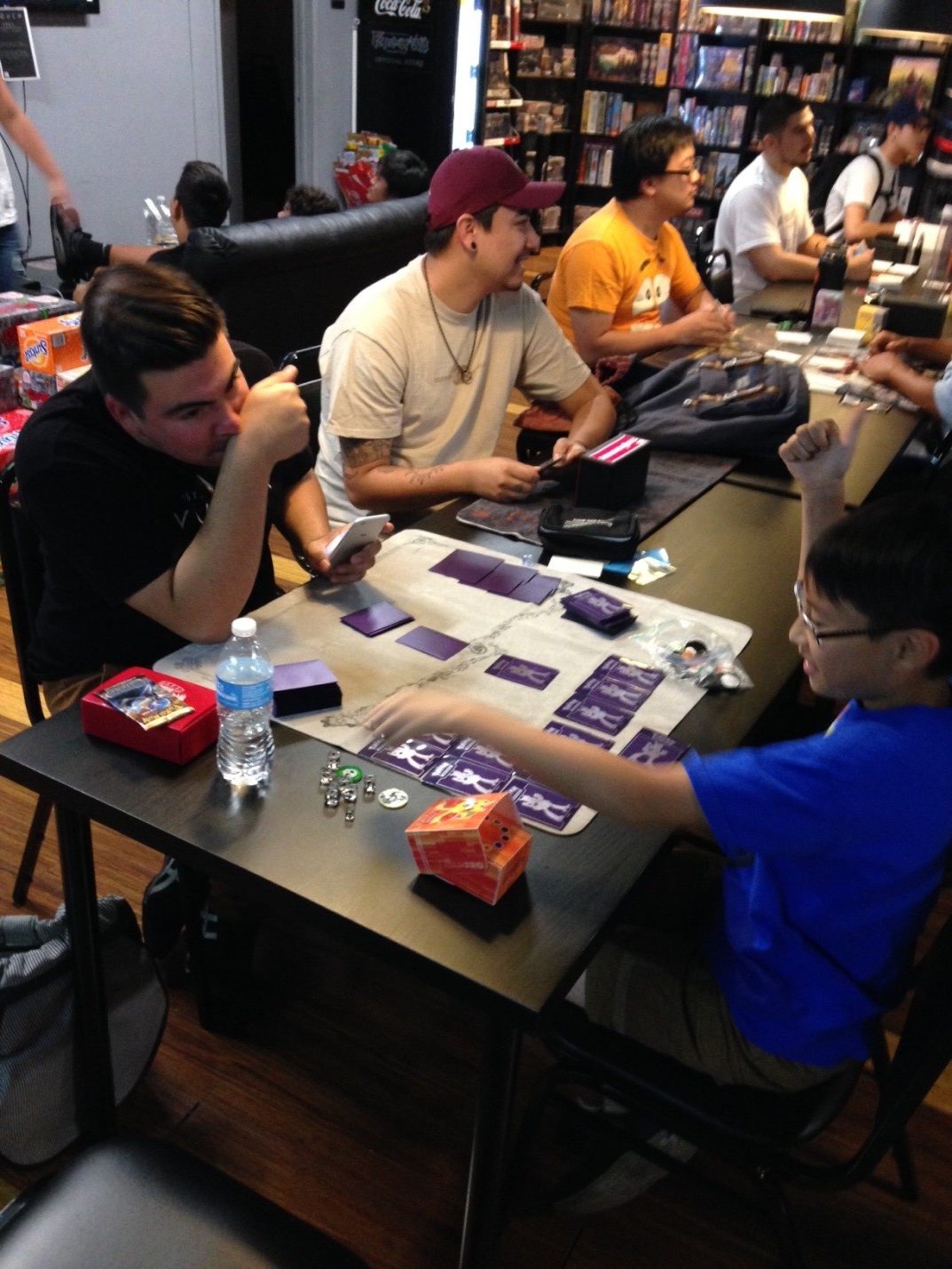
This all changed when we showed up for our first tournament at a local card shop. It was on a Wednesday night (a school night, but as luck would have it, they had that Wednesday off for some reason) and since there were no Juniors that night, he was lumped in with the masters, 22 in total. He sat down in front of his first opponent and the gentlemen was well spoken, very nice to my son and I started to second guess my perception of the people involved in Pokemon. As I watched my son play, I was amazed at what he was doing: I watch my 10 year old son play with no help, knowing all the rules (one Energy per turn, one Supporter per turn, etc.) with a deck that he constructed himself by collecting cards meticulously over a long period of time, a few cards here, a few cards there, trading a few friends at school for what he needed (it was Darkrai/Yvetal/Dark Patch) and then proceed to win his first match!
As a father, even if you are not into the game, you are still proud of your kid’s achievement. After the match the gentlemen was very nice and even started giving tips to my son on how to do better. There was no hard feelings at all, and I saw my son’s face just light up, smiling, and having a great conversation with the opponent he just beat. Aaron is usually a quiet and reserved kid so to see him just open up like that and socializing easily it was very delightful for me to see. As the night went on and with each opponent he plays, everyone was very helpful and willing to give pointers to help with his game, and my perception for the people involved in this game completely changed.
By the time we finished the tournament at 11:00 PM, Aaron finished an amazing 12th out of 22 masters…but what really opened my eyes was it felt like my son found his “world”. He found what he really enjoyed and he looked like a fish in the water playing this game. He was all smiles and couldn’t stop talking about it on the drive home. Some point during the drive home I said to him: “What if instead of fighting you about this card game, dad turn around and support you 100%?” A moment of silence followed as my son probably couldn’t believe what he just heard. In disbelief he asked “are you serious?” and I said yes, I’m going to put my full resource behind you and see just how far you can go, and I told him he’s got a talent in this and he should go for it. I think the kiddo was so excited that night he could hardly sleep.

This turn of event was back in October of 2016 and since then we’ve gone to tournaments big and small, driving as far as 7+ hours to San Jose for the regionals, and we enjoyed together many successes, disappointments, and everything in between. Aaron racked up a pretty impressive 215 championship points in his first year. As a father, what I will enjoy the most looking back on this 10 years from now would simply be the time I was able to spend with my son. We seem to always have great conversation when we are on those drives to tournaments and it really present an opportunity for father and son to bond.
From a parent’s perspective, I am now totally for kids getting involved in Pokemon TCG, and I’m an advocate for it at school when I speak to other parents about it (although I get a lot of odd looks). I proudly say we are involved with Pokemon TCG and we try our best to shine a positive light to the game and the great community people that are involved in it. We try to help other kids and parents understand the game (Aaron did a presentation in his class after the San Jose regionals), so they don’t have the wrong perception about the game much like I had.
I think parents should take a closer look at the structure of the game before completely writing it off. The game involves an incredible amount of strategy, patience, math, critical reading and thinking…all of which are great for kids to develop. I hope in sharing our experience other parents can have a better and clearer understanding of what this game is all about. I’m not only supporting my son Aaron; I now also actively participate in tournaments and play as well (I’m still a work in progress). I really enjoy meeting new players and the tournament atmosphere. Pokemon TCG has now become something our whole family enjoys together.
As a personal lesson learned: Sometimes it is okay to be a kid with your kid, be on the journey with them, and have fun along the way. You never know just what amazing new experience and opportunity awaits that you probably would not have discovered on your own.
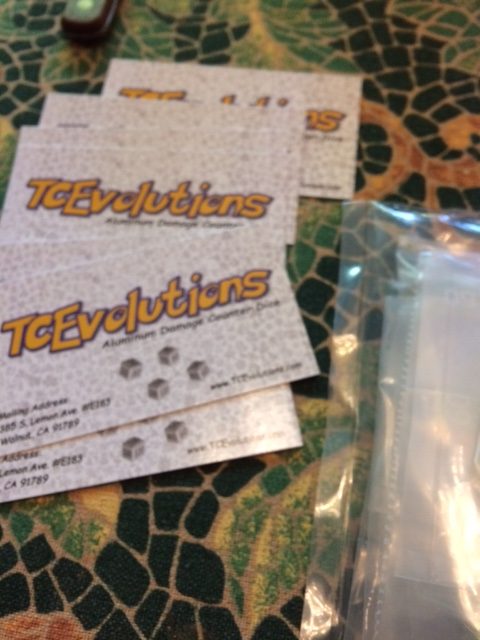
TCEvolutions Product Review
Author: John Kettler
Steve and Aaron also conceptualized and created a cool new product for Pokemon TCG: metallic damage counters and GX markers. In fact, we started talking in part because I was impressed with their product while looking at a friend’s Twitter page!
While my review is going to be honest, it should come as no surprise that I really enjoy what they’ve been able to make, and am excited to use these at Worlds. Let’s go step by step though…
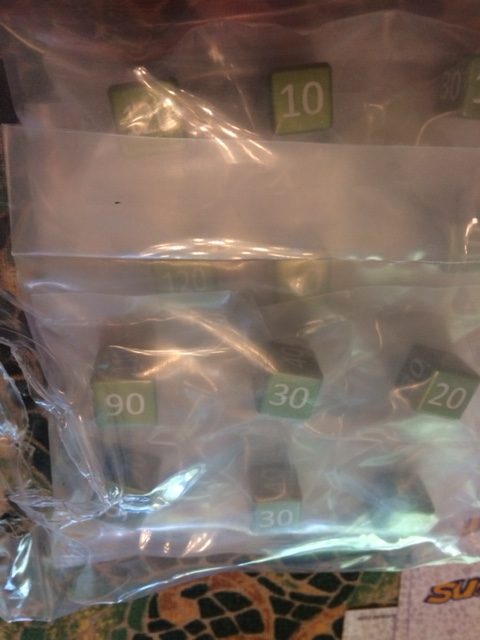
I received a custom mix-and-match kit featuring every type of core product in Steve’s arsenal. The kit I received included 14 numbered damage counters: eight ranging from 10-60, four ranging from 70-120, and two with large denominations going up to 230 and 240 (odds and evens). In total you have 1,430 damage in this single lot and I feel like the way that damage is divided offers a ton of versatility in damage placement for as few markers as possible. Contrast that to the normal player who carries around a bag full of dice, and you can see why a product like this makes sense. As far as the actual packaging goes, Steve puts them in some heavy-duty plastic wrap to ensure they get to you in a condition close to how they were originally produced.
You won’t have many, if any problems with tournament legality, since these are clearly damage counter dice and not randomizers. Newer players also run less of a risk of accidentally using these in place of their randomizers because, again, they’re clearly not randomizers since they have no pips like normal dice. Most importantly, all of these are six-sided, meaning it’s very hard for them to be knocked over. (The rules are silent about whether you can use 20-sided dice as damage counters, but just to be safe I would always suggest using six-sided only.)
The visual highlight of the whole package is the gorgeous GX marker. While it’s not too visually dissimilar from the official markers, the choice to keep its design minimalist complements the metallic nature of the marker pretty well. There are also just enough color options where it’s feasible to show off your personality some. Because the majority of my biggest accomplishments in Pokemon TCG involve green Pokemon (Ludicolo, Jumpluff, Accelgor, Vileplume, Decidueye), it was an easy choice to ask for green!
Last of all, the product I received came with a small black pouch. I think the pouch is a great start and a nice throw-in, although possibly too small once you start to add additional supplies like your coin, counters, and so on. This isn’t a big deal though, because I mostly consider it a throw-in.

For the general competitive playerbase, the price tag is workable. As of writing and without including shipping, it’s about $7 for a GX marker, various prices depending on the number of dice you buy, and then $22 for a six-dice/GX Marker combination. Unlike the custom kit I received, the $22 kit may not include enough dice, especially if you’re an Expanded player using Mega Rayquaza (Sky Field) or Wailord EX (250 HP). I would say, though, that these damage counters should work fine in about 85+% of board states in Standard. I’m not sure if other competitive players who received TCEvolutions dice for advertising purposes have received just as many as mine, but perhaps Steve might consider selling a value pack identical to this one.
As for the general philosophy of whether to purchase a product like this, it depends. Most of us just use dice and other things we find laying around, but for peace of mind it’s really nice not to have to shuffle around your bag to find the right stuff. It’s also a no-brainer purchase for someone already going full-foil, max rarity on their decks – it’s probably the classiest-looking damage counter product I’ve seen, and fits the aesthetic of a money deck incredibly well.
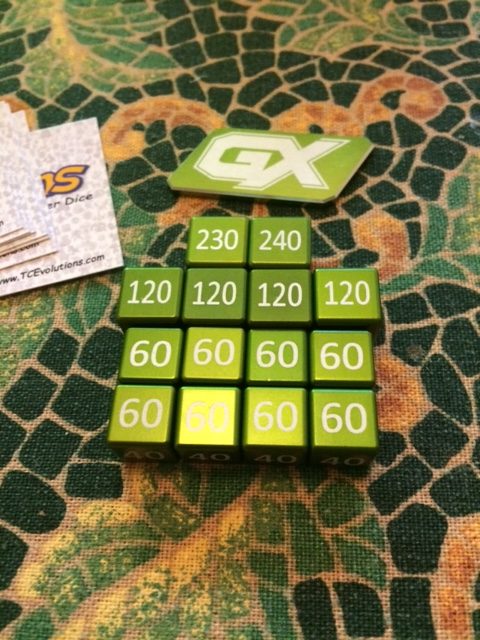
In conclusion, the TCEvolutions Dice/GX Marker combo is incredibly cool, and I’m excited to start using it. If you get the same 14 damage dice and marker I did, you’ll also be able to cover nearly any foreseeable board state. While I have some small criticisms about the pouch and some ideas on how TCEvolutions can enhance the product, Steve and Aaron are definitely using their sophisticated understanding of the player base to give us some really cool stuff.
P.S. See you at Worlds, guys!
Secret Wonders: A Survey of Worlds-Level Players and Secrecy
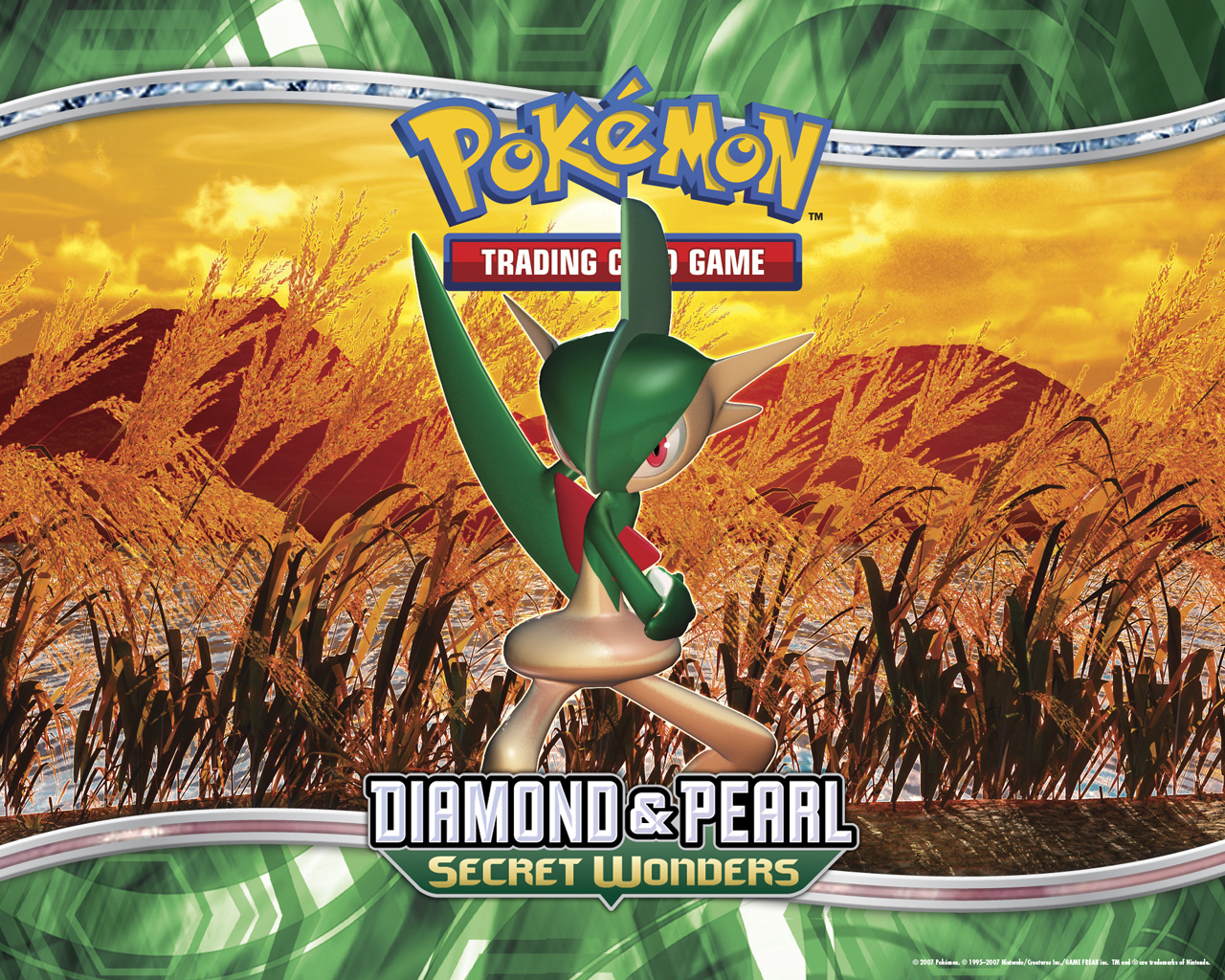
Worlds is a little more than a week away, and the deadline to turn in deck lists for Day One is even closer. With a new set just out, we’re sure to see a lot of incredible surprises as soon as the first round.
But what of that? Just how big of a deal are secrets in the Pokémon TCG? Scroll down, dear reader, and I’ll tell you why…
Why Understanding Secrecy in Pokémon is Important
Yesterday we discussed the reasons why metagaming is important. You can read that article here, but basically little choices go an incredibly long way in Pokémon TCG – arguably more than in any other game. Players in Pokémon therefore rely on secrecy to hide their little and big choices from the competition, so understanding this thought process from some of the game’s best players is something I think is worthwhile.
A Survey of Secrets: Discussion and Analysis

In less than 48 hours, I was able to obtain and analyze the opinions of 27 Worlds-qualified players about secrets, mostly American and European. Below is the post I made, including seven questions and relevant explanations:
“This poll is designed to better understand the competitive community’s attitudes when it comes to secrecy about decks, techs, lists, and metagame. The answers themselves serve as useful competitive content, but I’ll also be analyzing the responses to write a HeyTrainer blog entry for Thursday. I will be factoring in all answers received by end of day on Wednesday.
(Anyone should feel free to answer, but I’ll only be factoring in Worlds competitors’ responses for the blog post.)***Definition – “Secret, secretive,” and other variations of the word “secret” refer to withholding opinions and knowledge from almost all other players.
-Q1: Which day are you qualified for Worlds?
-Q2: How many years have you played competitively? “Competitively” means when you started attending any Play! Pokémon events other than prereleases.
-Q3: On a scale of 1-10, with “1” being not secretive at all and “10” being extremely secretive, how secretive do you think other Worlds competitors are being prior to this year’s World Championships?
-Q4: On a scale of 1-10, with “1” being not secretive at all and “10” being extremely secretive, how secretive do you think the competitive community is in general?
-Q5: On a scale of 1-10, with “1” not effective at all and “10” being extremely effective, how effective do you think it is to keep decks, techs, lists, and/or metagame calls secret?
-Q6: Do you perceive a particular age division, country, or player base as the “most secretive”? If so, please name the country or player base and explain why.
-Q7: What are your overall thoughts about secrecy in the competitive Pokémon TCG?”
Results
Q1 Sample Pool: 27 Worlds-qualified players (6 automatically qualified for Day Two)
Q2 median time playing competitively: 6 years (five players have played competitively for at least a decade)
Q3 median: 6 (most responses were 6 or above)
Q4 median: 5 (most stayed near the middle)
Q5 median: 7 (most responses were 7 or above; 5 people answered “10”)
Q6 discussion: See below
Q7 discussion: see below
Some responses were nuanced, which is good, but for the purposes of simplicity I assigned a few numbers based off my interpretation of the responses. So if someone gave me two numbers, I would in some cases take the higher number, or an average of the two numbers depending on what they said.
Analysis

Question 2: Most of our respondents are veteran players, having played competitively for a significant portion of their lives. And while I did not ask for player ages, I could tell nearly everyone who responded was 30 or under, meaning the average respondent has been on the competitive circuit for at least 20% of their lives. These are mostly people who have both seen the game grow over a solid period of time, and likewise have grown up with the game.
Question 3: Overall, Worlds-caliber players consider their competition as being somewhat more secretive than normal. I think this is in part explained by the answers in Question 5, which reveal that these same Worlds-level players think secret-keeping is highly effective.
Question 4: Our 27 Worlds qualifiers for the most part consider their peers in the general community to be secretive, but not quite as secretive as their fellow invitees. My interpretation is that the only reason Questions 3 and 4 had different results was specifically because of the prestige of the event.
Question 5: Overall, the Worlds players who responded consider secret-keeping to be very effective. Several of the explanations emphasized the importance of the tournament which makes sense – if a small amount of variance can mean the difference between $25,000 and $0, then edges along the margins matter!
Question 6: This is where things get very interesting. Of the 27 responses, I gave everyone a chance to call out a specific group they considered secretive. Here are the ones who got called out for one reason or another, and I’ll help break it down…
*Top 16 North American players
*Small Testing Groups
*Denmark
*Elite players
*Japan
*Europe
*Juniors
*Seniors
*Masters
*Masters in the U.S.
*Top 16 North American Masters: Variations of this answer all referred to the players who finished, and more or less stayed in the top 16 Masters in North America. These players received quarterly stipends to travel to each International Championship, and ultimately received automatic Day Two invitations along with additional trip stipends. Between the responses I read, and what I’ve personally heard online/in real life, many consider this group to be very “clique-y.” This has resulted in some distrust and belief that between special top 16 Facebook chats and dramatic accounts of 2-3 top 16 players running off from their roommates, they are making a concerted effort to maintain secrets from the rest of the playing population.
As someone who’s been a part of secretive groups, and personally knows almost everyone a part of this group, I can tell you this is overblown. This misconception is mostly because the top 16 North American Masters are clique-y – but how are you not going to become clique-y when traveling around the world with these people who share your culture and nationality? And while I have yet to earn the street cred to be welcomed into the Valhalla that is the Top 16 Group Chat, I can guess that most of what they discuss is unrelated to decks or techs – probably some combination of obsessive figures related to maintaining their Top 16 status, girly gossip, and memes.
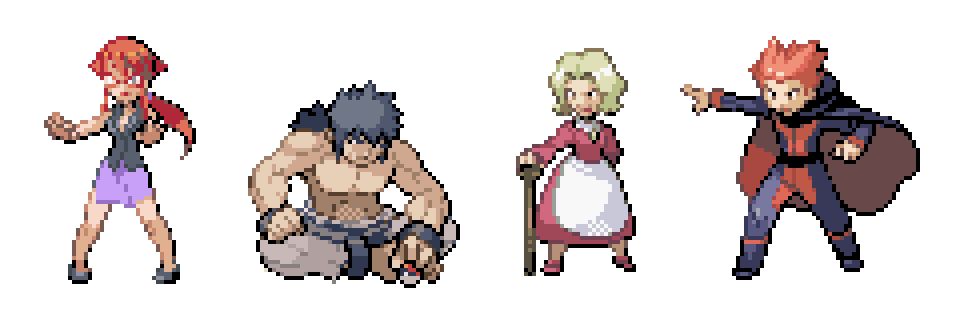
*Elite players in general: A couple people suggested elite players as a whole are uniquely secretive. This actually makes a little more sense if you consider that these 27 players also consider secret-keeping highly effective. Of course, nothing makes more sense than…
*Small Testing Groups: This is in my mind the best explanation for secret-keeping in the Pokémon TCG. Whether you look at the Top 16, elite players, or even your local league, you find the deepest and most effective maintenance of secrets when it’s a small testing group. Usually you will see these groups in the form of teams, but it’s not always that simple.
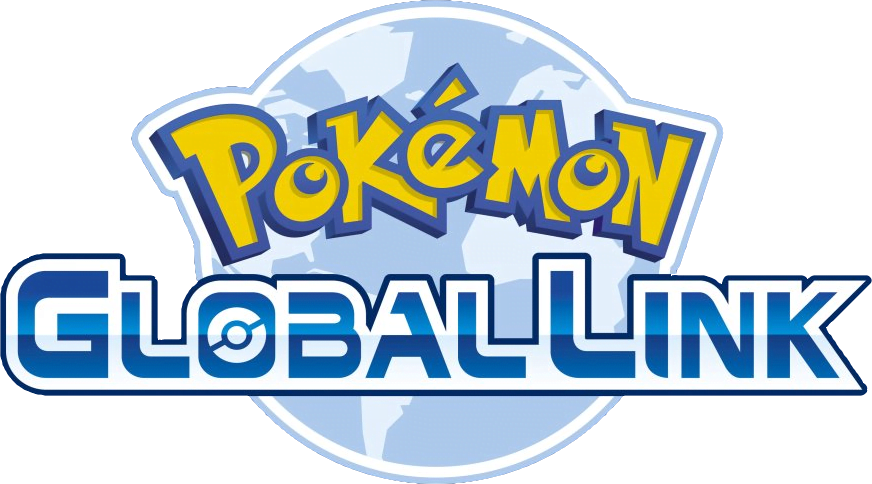
***Networks: However, oftentimes teams and testing groups “link” to one-another with a few shared members, resulting in a larger network of elite players, which to an outsider may be mistaken for a larger group. For example, at Mexico City Regionals, Michael Pramawat, Sam Chen, Kenny Britton, Ben Potter, and I roomed together. We also hid nothing and knew pretty much what each other was using. To an outsider with imperfect information, this would look like we were highly organized, when in fact we were only a network of different factions:
-The Pram/Potter/Ramey homestead
-X-Files
-Top 16 clique
-Cali crew
-Lone wolf (myself, who for several years hasn’t had a dedicated team or testing group)
To be honest, none of us were trying too hard to be secretive with other people, but it’s still a good example where a “testing group” breaks down and becomes a network, if for only one event. So testing groups are certainly the best explanation for secrecy at the individual level, but it is not always a rigid thing.

*Age groups: This seems like a wash, because I had two responses for the younger age groups and two for the Masters (one specifying the U.S. Masters in particular). However, the issue is worth examining because there’s at least some suspicion the secret-keeping differs depending on age group…
Yesterday we also discussed some of the shadier, overly aggressive tactics the younger age groups and their parents use against each other to get an edge. Oftentimes these include secret-keeping, and unsurprisingly this secret-keeping can become just as toxic. A particular Poke dad who used to play in an area of mine – let’s call him Lanky Larry – made a habit of asking as many Masters players as possible about the movements of other younger age group players, so he could best protect his son’s secrets while at the same time attempt to fish for as much information as possible. While this sort of behavior is certainly possible in Masters, Lanky Larries are a real and constant threat to the Spirit of the Game, and are an example when secret-keeping goes too far.
*Countries and continents: This is a little bit more absurd, but I think given the lack of communication between the regions can explain why there’s been distrust in the past. Several times in the past, Japanese players have come to Worlds with totally shocking, surprising decks, yet all evidence suggests these decks were never secret; rather, they were simply under the radar because other areas lack communication with Japan. An extreme minority of Americans, for example, actually test with Japanese players, so the barriers in language and means of communication are just too great. Therefore, many of the biggest country-exclusive surprises at Worlds can be explained by poor communication, and not secrecy.
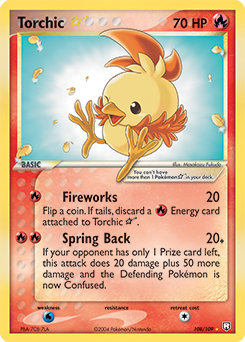
Question 7: In this final question where I gave people a chance to sum up their overall feelings about secrets in the game, I received some very interesting observations. Above all, Worlds competitors consider the current state of secrecy in our game to be “fine” (yes, that exact word). Whether they think it’s useful, not useful, or don’t personally care at all, these pro players recognize secrets are a thing, but that more often than not it is not actually a problem. A couple of our oldest players observed that the days of obsessive secret-keeping are long since dead, and that what we have now is actually much more manageable than back in 2004-2010, when secrets were a defining trait of Pokémon TCG’s metagame.

Another common trend I observed was that a few players were measured in the way they view secret-keeping. One answer I found particularly revealing was the following:
“I am not too big a fan of secrecy. I think that being open about new ideas is beneficial to grow a stronger player base. I also am not a fan of the sort of cliques that this attitude of secrecy brings. I understand why it exists and to be honest I lived that life in a different card game and it got me to worlds so I’m not going to say it isn’t effective but in retrospect I would have made a lot more friends if my group and I shared more of our ideas.”
There is an incredible amount of truth in this comment because secrets and the politics behind secrets can be quite damaging – just see my above discussion of Lanky Larry. We’re not secret agents – we’re a bunch of guys (and some gals) tossing around pieces of shiny cardboard. Sometimes that cardboard-tossing can get us great prizes though, so you may arrive at a point where your perfectly rational, wisely-kept secret will make you less popular.

Some Final Thoughts
Ultimately, here’s where I see our competitive community stands on secrecy, as well as where I agree and disagree with the 27 respondents:
1. I am qualified for the first day of Worlds;
2. I have been a competitive player for 15 years;
3. Headed into Worlds, players are likely a solid 6 in terms of secrecy. Ideally we’re a 7 or even 8, but unless you know with certainty something is amazing, or you have been sworn to secrecy by a friend, your “kinda-sorta secret” idea will most likely be leaked. I’m sure it’s already happened a bit to me on PTCGO, and I know for a fact at least one user on there is probably aware of my general testing trends right now.
4. Our community as a whole is only a 3 in terms of secret-keeping. I think tournament attendees are actually great consumers of new deck and metagame information, and are overall happiest when there aren’t many secrets. The only reason I don’t say our community is a 1 is because of A) small testing circles and B) dark horse winners of major events always make great stories, and I think the general competitive community who didn’t qualify for Worlds loves seeing things like M Audino EX win.
5. I would agree with the respondents that secrecy (and most obscuring of information) is about a 7 in terms of effectiveness. If I were answering this back in 2005 or 2006, it would’ve been a 10 easily, but premium websites, Facebook groups, and blogs such as this seriously hinder the effectiveness of secrecy.
6. Small testing groups and the younger age groups are the most likely to keep secrets. I think countries and regions of the world are oftentimes mistaken as being secretive because of poor communication, or because small testing groups in those places have already developed.
7. Personally, I’m happy with the place secrecy has in the Pokémon TCG right now. As a competitive player, it’s vital to keep some surprises hidden, even if they’re small or not very flashy. However, you need to balance the benefits of secrecy with the benefits of opening up to others. Small testing circles run the risk of becoming echo chambers, so a diversity of thought you find in larger networks is oftentimes ideal.
A Primer on Pokemon Metagaming

Today we’ll be sharing a brief piece on metagame, targeted both at newer players getting into the competitive scene as well as veterans desperately preparing for Worlds next week.
Why Metagaming Matters
Metagaming is essential to success in the Pokemon TCG. Yet a lot of players spend a lot of time talking about metagame without ever actually knowing what “metagame” means.
It sounds like a $10 word, but all it means is the game played around the game. So if building your deck, dealing out your cards, and making in-game decisions can be called the “main game,” then things like deck countering, tech selections, and even other little decisions about the events you choose to attend can be considered the “metagame.” Being good at metagaming is arguably more important in Pokemon than any other card game because matchups count a lot, you constantly have access to your full deck, and there is no sideboard – all things that make your calls crucial.
Types of Basic Metagaming Methods
Deck countering: If you have a good idea of what the field of an event will look like, you can make a better informed deck selection and win the tournament. So if you’re pretty sure the 2017 World Championships will have a ton of Volcanion, Greninja BKP and Gyarados AOR suddenly look like much better choices, and acting on that knowledge makes you a better metagamer.
This doesn’t just apply to weakness, though – it can apply to exploiting any vulnerability in the field. Using Decidueye GX/Vileplume AOR was a metagame call of mine in Anaheim because I knew that even though Volcanion would be popular, I could bring up high Retreat Cost Volcanion EXs and then use Feather Arrow to score easy prizes on the bench. Thus, despite the Weakness to Fire, I played and went undefeated against five Volcanion decks in a row, effectively making Decidueye a “counter” to Volcanion.

Tech choices: These are essentially the same decisions you’re making as deck calls, but much smaller. In Pokemon, choosing whether or not to run a tech oftentimes results in radical matchup changes, turning a close matchup or even an autoloss into a favorable matchup.

All Other Pre-Tournament Decisions: Aside from decks and techs, there are important metagame implications about everything you do leading up to a tournament. Are you writing your decklist in public or private? What time are you turning in your deck list? Who are you talking with prior to the event? All metagame calls in one way or another, and they play important parts in your deck and tech decisions.

Strategy Recommendations
Deck Choice: Everyone knows it’s important to play a good deck for the field. If the best deck is countered to oblivion, then it is therefore not the best choice, making the counter deck or even a third option with good matchups against both decks much smarter choices. But because this is in constant flux, you need to pay attention to what’s going on around you. Stay on social media; have some idea of what the premium article sites are talking about prior to an event; and don’t ignore sudden hype the day or two before an event. People are bad at keeping secrets, so I’d say it’s sensitive moments like the night before when people start leaking all their best ideas.
Worlds-Specific Advice: Do your homework before Thursday. Since most Day One competitors are required to turn in their decklists on Thursday, you probably won’t enjoy as big of an advantage in hearing about hype and adjusting accordingly. That’s okay – you just need to compile all the information you know and make the best predictions based off of that.
Local Event Advice: It helps to have multiple decks ready since hard countering and scouting are most likely at these events. Even if you think you’re not a “name” player, good players are constantly keeping you in mind and what you will play.
Techs: Where you trend on techs seems to be very event dependent. The more likely you and others blend in, the less helpful it is to hard counter anything in particular and instead just opt for consistency. One of your biggest enemies in every game is a bad hand, so sometimes just choosing not to play the metagame and go for pure consistency works out well in your favor. Contrast that to League Cups, and sticking with your great deck but adding a bit of extra spice can pay off big-league.
Pre-Event Decisions: Since this is so broad, I’ll drop some specific observations I’ve had over the years. The overall theme is balancing your love of the game with prudent guarding of your information – keeping your cards close to you chest.
*At local events, don’t be that guy, and don’t tolerate other people being that guy. It’s good strategy to use the knowledge at hand to make the best decisions you can, but it can get so absurd you have people turn into wannabe secret agents, taking peaks at lists, being nosy about deck choices of opponents, and so on. Local events are the last places we need to be encouraging toxic behavior, and believe me, heavy-handed metagaming can get very toxic if you forget this is a social game meant to be enjoyed socially.
*Several overzealous parents and kids won’t get the memo from my point above, so if you’re in a younger division or a parent of a younger division player, be more cautious. Be friendly, trusting, and kind, but by all accounts, Juniors and Seniors are plagued with hard metagaming and hard deck/tech hate choices, so you are best served to maintain privacy in your deck choices on-site.
*Minimize the borrowing. This is a “do as I say, not as I do” commandment, because I personally like borrowing as well as loaning out cards, but if you’re playing the metagame optimally, you won’t need to borrow a single card.
*If deck lists and checks are done before a tournament starts, it’s best if you do yours right before the cutoff time. The more people whose decks are locked in, the less likely it is someone will get a fortunate glance at your list.
(Tournament Organizers and Judges, if you don’t want a flood of players at the last minute, either choose a different time to take up deck lists – before round one is a good time – or be very cautious and deliberate when it comes to securing the privacy of a deck check.)
*If you want to keep your probable deck list choices a secret, don’t play or talk about them in an overly public fashion. This is the essence of secrecy, and is the perfect transition into tomorrow’s blog entry!
CONCLUSION

This only scratches the surface, but I hope newer and Worlds players alike have a much better understanding of the basics of metagaming. Good luck in your next big events, guys!
Invitational Hazard: Pros, Cons, and Constructive Criticisms of the 2017-2018 Season’s Structure

In case you were living underneath a rock this week, Play! Pokémon dropped a much-appreciated early announcement regarding the prizes for the 2017-2018 tournament season, as well as the invitational structure for the 2018 World Championships. Today’s Social Saturday is dedicated entirely to evaluating the new system’s pros and cons, as well as offering up constructive criticism on how Play! Pokémon might improve upon itfor 2019 and beyond.

Evaluating the new system: Pros and Cons
Pros
1. A more inclusive Worlds. I always thought it was a brilliant idea to re-brand the Last Chance Qualifier into a closed, slightly more exclusive event known simply as Worlds Day One. The inclusiveness of this event was put into serious question for 2016-2017, but a mid-season point “curve” resulted in many people getting invites they simply would not have been able to earn otherwise. I generally like it when some portion of Worlds is inclusive because it’s simply a good marketing tool: It encourages above-average players to hustle for a very attainable goal, and makes the real event of the weekend – Day Two – also relatively attainable. While the competency of your Worlds Day One opponents may be higher than those you face on the first day of an International event, going a 4-2 record is simply much easier mathematically, meaning that a Worlds Day Two berth for a relatively mediocre player at the time could mean growth into a major competitive identity.
tldr – I think the structure of Worlds Day One is improved because it gives players an attainable goal, and offers a reasonable gateway for unknown players to rise in the ranks.
2. Transparency and timeliness. Whereas in the previous seasons we spent months into new seasons clueless about just what these big tournaments of ours would mean, Play! Pokémon has done a superb job laying out as many early details for us as they could. It would have been nice to get Liverpool details confirmed earlier than they were, but I think some easy guesswork was all we needed to know it would be essentially the same thing. A late July drop of this information is about the best we could have asked for.
3. It attempts to differentiate large International Championships from small ones. Although I still have many concerns about the details of next season’s Championship Point spread, I’m happy to see that the point payout will be deeper for some International Championships than others.
Cons
1. The Championship Point structure has more holes in it than Swiss cheese. While it’s great that Worlds is more inclusive, in many ways it’s the easiest it’s ever been for people to “buy” invitations. By that I mean players are now virtually guaranteed invitations as long as they travel to as many Regionals as they can, resulting in anyone able to make Pokémon their obsessive hobby capable of getting an invitation, even if they have a severe lack of skill. While I’m by no means elitist on the topic of invitations to an event like Worlds, nor do I feel we need to ever go back to something as limited as 64 people for 2007, the bar is now so low that any bad player with enough free time and cash, as well as a decent enough archetype, will qualify.
Because there are so many issues I have with the new point structure, even compared to the 2016-2017 season, here are some brief comments:
-No Best Finish Limit for Regionals, and zero practical BFL for Internationals. While these events are certainly a notch higher than League Cups and have much more on the line, I find it bizarre they made zero effort to curb people’s ability to spam upper-tier events. Andrew Wamboldt of TheCharizardLounge.com made an excellent point that an unlimited BFL means players literally could trade going t League Cups in for hitting up the Regional Circuit. However, I think it’s still ultimately a problem because it inevitably results in a system where we are simply not coming close enough to calculating a season’s best players.
-Zero substantive change to Internationals Championship Point payouts. Play! Pokémon should have done the same sort of serious contrast between Melbourne and Indianapolis that the fans did, and come to the simple conclusion that Championship Point payouts of 130 all the way down to 64th place in a 260 person tournament is absurd. While I certainly agree that no system can ever be perfect, and we owe a lot of respect to the hard work P!P does in designing a system like this, there’s no way around several of the most important point choices being bizarre and inappropriate.
-Special Events now being worth the exact same point payout as Regionals. While the vast majority or even all of the SPEs are less attractive options due to not giving out direct cash prizes like Regionals, it’s nuts to see a flat-out less attractive tournament series receive the same points. It’s a more extreme version of the hypothetical where League Challenges – fun entry-level events – were given the exact same points as League Cups, which became an essential element to the Day Two grind this past season. It inevitably lures the rich frequent flier club players into areas which desperately need Championship Points, such as Puerto Rico and Mexico, and in the long run actually results in a less skillful World Championship because a little bit of variance in favor of a Day Two qualifier in the U.S. could result in almost no invites for whole territories or even entire countries.
I could go on, but let’s save it for the comments.
- The stipend system for Internationals is improved, but leaves much to be desired. When you’re having Regionals start as early as July, why do only the results from 2016-2017 count towards determining who gets help going to London in November? This is definitely an “in-the-weeds” sort of beef, and not at all something that’s terribly relevant to the normal playing community, but I think quarterly awards would have easily been the best way to go in order to keep the pools of players at these events unique and fresh.
3. Day Two in general appears to be a grind. Unlimited Regionals for Best Finish Limits, coupled with increased awareness about the importance of International Championships could easily mean that the top 16 players next season may need as many as 1,500 Championship Points in order to get a free pass into Day Two.
Constructive Criticism
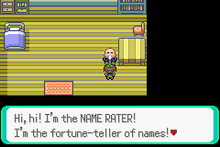
“Hello, hello! I am the official TOURNAMENT SEASON RATER! Want me to rate the CHAMPIONSHIP POINTS of your TOURNAMENTS?” Now that I’ve discussed a few pros and cons of the new structure, let’s consider three very important points I hope Play! Pokémon keeps in mind, and perhaps applies in order to improve 2019 and future seasons.
1. Don’t change course mid-season. No matter how small the Junior division looks, and no matter how “packed” you want to make the World Championships look, please don’t surprise us with a sudden change in course.
This point is mostly jaded by bias, as Play! Pokémon’s decision severely disadvantaged me personally. I For the first half of the season, I simply chose not to participate as much: the highest-ranked event I played in until February was a League Cup, in part because I didn’t want to pull the Regional circuit grind in an effort just to get a normal invite, so I figured the most cost-efficient approach would be a strong showing at the International Championship. I was more or less right about this: Had there not been a point bump, I would’ve clinched my Day One invite in Mexico – a mere three weeks before the NAIC.
Play! Pokémon saw it was going to have a very exclusive, very short day one, and so to accommodate for a more inclusive pool, bumped points across the board. That’s all well and good, except for the fact that they bumped points for nearly every possible finish, mediocre ones included. This coupled with an extremely generous Best Finish Limit for Internationals and Regionals resulted in the frequent flier club essentially locking anyone else out from finishing in the top sixteen, even with a stellar finish at the NAIC. Had Pokémon just stuck with an easier or harder system from the start, I probably could have made better decisions with my season; instead I got punished severely for not riding the circuit from September to January.
It’s a small universe I’m a part of, since this change only really disadvantaged about a dozen other competitive players, so let’s also look at it from the normal player’s perspective. There were more than a few people who gave up on this season entirely due to how hard it looked to qualify. And they’re right, because if you wanted an invite in the Master’s Division without going to an IC, you had to win a minimum of four tournaments: two league cups and two regionals! All these regionals still had marvelous attendance, but had Play! Pokémon simply started out with the easier system, rather than change course midway, it would have been so much better.
2017-2018 is clearly a year geared towards making it easy to qualify for Worlds, so I hope we don’t see a sudden, not-easy-to-predict change like this again. Even if it’s a popular decision in the moment, Play! Pokémon runs a big risk of destabilizing its own tournament season, since the player base wants and needs as much information and stability as it can get.
2. It’s fine if you want an inclusive Worlds – just be sure you have the venue space. As much as I love the Worlds experience and appreciate what Play! Pokémon does to make it happen, having such an inclusive World Championship became a very bad thing when it became apparent that the venue was tinier than baby shoes. Constantly having to flash my badge and wait an hour for Day One to start was a stressful experience, and despite San Francisco being the home to Niantic during the height of Pokémon GO’s popularity, Worlds 2016 does not rank among my best Pokémon experiences.
To be fair, I’m not sure they even knew it was going to be in San Francisco by the time they announced the structure, but it’s still imprudent planning to make Worlds so easy to qualify for and yet have people waiting outside the venue for over an hour just to get in.
3. While your players may sometimes be rude in the way they communicate, please don’t ignore them when they’re clearly speaking out in the best interest of the competitive TCG’s future. It’s easy to become desensitized to a person’s argument as “just another salty person being salty,” but hundreds of people have already cited many of the same issues I have in this post. I’m sure it’s hard seeing your hard work met with language much harsher adjectives than “absurd” or “bizarre,” but that’s because your players are passionate. What may seem to be a small issue regarding the Championship Point spread actually makes a big difference in how your competitive brand is perceived, as well as how competitive players will continue to enjoy your game and your tournaments.
Posts like these don’t get called “Invitational Hazard” because everything is perfect, but they’re also not awarded passionate language like that when we just see the game as nothing more than a short form of entertainment. We really enjoy playing competitively, to the point where people spend the better parts of their day theorizing about the “best structure” for zero pay or accolades, so remember that even if players don’t use the nicest words, their hearts are in the right place.
Tournament Preparation Tips, by Demarcus Reddick
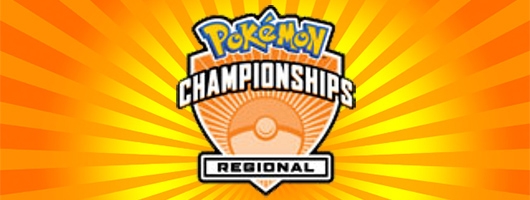
Introduction
The regional tournament you’ve spent months to prepare for is just a week away, and players all around are busy making their last minute changes to their decks. Some are still searching for what deck to play; others are looking for that magical tech that will take them over the top. A lot of times, however, it is not what deck you use in the tournament, but how you prepped for the tournament itself. The Regional and International tournaments have been growing larger and larger over the last two years, with the North American International Tournament being the largest ever. And if you’re not careful and make the right preparations beforehand, it can be the difference between either making day two or scrubbing out.

Before I start, allow me to introduce myself. My name’s DeMarcus Reddick. I live in Dallas, Texas. I started playing this game when it first came to America back in 1998. I started playing on a competitive level in 2006, becoming a judge in 2007. My biggest tournament victory came in 2010 at the Texas State Championship in the Master division. In 2012, I made the decision to switch my primary focus onto judging more major tournaments. I’ve judged eight Regional tournaments since 2012, including two times as head judge for the Senior division. I’ve also staffed at US Nationals twice: once as a volunteer, the other as a floor judge. This year at the NAIC, I volunteered and worked mostly at the deck check area. I’m currently a Stage 2 Judge.
This article is designed to help you have a better experience during tournaments. Whether you’ve underachieved or overachieved your expectations, you should leave saying, “I really enjoyed myself this weekend” without any regrets over how you actually prepared.
“What’s the Play?”
The most common question right now is “what’s the play?” What is the deck that is the best of the best? What will get me that major tournament win? The answer really lies within yourself. In order to answer that question, ask yourself – what is your play style? What deck do you have the most experience with?
At large tournaments, it is best to play a deck that you’re more familiar with. In this format, every deck has an auto-loss to another deck. The only thing I will say is that you shouldn’t play something that will auto lose to the most popular deck. One more note: Be creative. Most decks do well because of the surprise factor. People don’t see it coming.
Tournament Expectations
As mentioned before, Pokémon tournaments are getting larger by the week. If you’re a Master, there can be at least 300-500 players in your age group. Yet there can be only one winner, so don’t go in thinking that you are guaranteed to win the whole thing. There are a lot of factors that go into a successful tournament win, and while playing the right deck and making the right moves matter, there are plenty of other factors that weigh in one winning the entire tournament. Things like what cards are drawn, what other decks are being played, how hot you run, what are your prize cards, and the flip of the coin are many factors that you can’t control in the tournament. There are of course ways to maximize your odds. If you focus on limiting your misplays, critically thinking your way out of tough spots, and just flat out enjoying the game in general, you’re going to be fine for the day.
Another thing to expect is to prepare for a long day. Masters will be nine rounds hands down. You need to be prepared mentally for a long main event day, which is something we’ll discuss later in the article.
Pre-tournament Preparations
Advance Preparation Pre-registration
Some things you have to take into consideration is that this isn’t one of your local leagues where you can show up with just your deck and your trades and you’ll be fine. At a large major event, you need way more than that to have a successful day. The first thing is that if pre-registration is available, then you pre-register as early as possible. This way, you’re guaranteed your spot in the tournament. This also gives the Tournament Organizer a good Ballpark figure of the number of attendees to the tournament, which will allow them to make changes to a venue that will better meet the needs of the tournament players. In other words, pre-registration helps them help you.
The Day of the Tournament: SLEEP, SHOWER, EAT!!!

1. The night before, you need a good night’s sleep, and playtesting your deck until 4:30 in the morning isn’t the best way to get that last minute preparation done, especially when your check in is at 8:00 in the morning. Chugging Monster and Mountain Dew all day will just leave you a jittery mess the entire day.
- Next, FOR THE LOVE OF ARCEUS TAKE A SHOWER!!!! I can’t stress this enough! There are going to be thousands upon thousands of people in a closed space. They do not need to smell your body odor because you decided to sleep in. You will be an annoyance to every player you meet, and if you’re spending all day worried about why people hate you, then you can’t focus on winning. If it gets too out of hand, there’s even a chance that you’re gonna be asked to leave the venue due to the distraction and health risk you pose. Also, the benefit of showering can be quite the calming thing you need before a tournament – it naturally wakes you up in the morning.
- Eat. Have a good breakfast: You’re gonna need fuel for the long day. It will give you the drive and determination to play and battle until you’re needing that lunch break. You should also bring something to snack on, or at least enough money for snacks being sold at the venue. It’s going to be a long day for you no matter what division you’re playing in. You will need to keep your energy up. You won’t be able to think straight if your stomach is rumbling because your body couldn’t make it to the lunch break – assuming you have one.
The Decklist

Now that we’ve covered that, let’s discuss a very important aspect of the tournament: your decklist. Your decklist is very important. A lot of penalties have been given due to decklist issues, from warnings to tournament-ending game losses. You need to review and double check your decklist often and thoroughly. It is a good idea to have your decklist written out before you make it to the venue. If you have to fill out your decklist on site, please arrive early enough to write it. Don’t show up 3 minutes before decklists are due and start writing it. It will not bode well for you in the end. Also, if you’re rushing in writing your list, then you’re more likely to make a mistake in writing it.
One note, if your handwriting is similar to a kindergartner on their first day of school, TYPE UP YOUR LIST. Illegibly written decklists can result in errors during checking. It will cause your deck to be miscounted if your 9’s looks like a 4. Most decklist creators also count the deck for you. While you’re preparing your decks, make sure that you’re keeping count of your deck. Do this throughout the tournament so that you don’t lose any cards during the tournament.
During the Tournament
Now that we’ve talked about what to do before the tournament, let’s get to what you need to do during the tournament. The first thing that I’m going to mention is that if you’re able to, take advantage of online pairings. The main advantage of using online pairings is that those pairings are up and ready to go well before the paper pairings. It lowers the chance of you playing the wrong opponent. The online pairings only show you who you’re playing. You don’t have to worry about accidentally reading the person’s name above yours because your names are very similar. Also, having online pairings cuts down on the traffic in front of the paper pairings. If you’re going to use the online pairings from your phone, bring a portable battery. It will be to your advantage, especially if you’re playing Pokemon GO during the tournament all day.
As you are reading your pairings, make sure that you take note of your table number as well as the name of your opponent. That way, if you’re at your table first, you can make sure that you’re playing the right person. When you see your opponent, introduce yourself. “Hello, my name is DeMarcus. Are you Chris?” If it is him, then you’re ready to go. If it’s not him, then you two can double check the pairings and make sure that you’re at the right table. Another thing that you should be keeping an eye out for is your record. If you’re supposed to be 3-0-1, then your record on the pairings should reflect that. If you see that your record is incorrect, then go to the computer area where you turn in your report of your matches to get it corrected.
Throughout the tournament, please keep note of all announcements made by the tournament staff. Whether or not it’s during the player meeting, or during random times during the tournament. Keep your ears at the ready when you’re hearing the staff make announcements. It could be you that is being called for an issue that needs to be taken care of. Or the tournament staff is answering the question that you’re asking.
Be cordial to everyone that you meet there, whether it be that random newcomer, the tournament judge, or the staff running the prize wall in the side event area. You don’t want to be known as the tournament scene jerk that seems to be the butt of the jokes on most social media sites. We are all supposed to uphold the Spirit of the Game here. It’s not that hard to be helpful and kind to others. Also, you’ll never know what kind of people you’ll meet and where your next friend will be from. That’s the great part about this tournament. Everyone from all walks of life coming together to enjoy something that we all love.
During the Match
Various interactions, like a game play error or disagreement about a ruling, may require a judge. If you need a judge, you need to immediately stop what you’re doing, raise your hand, and call for a judge. Keep your hand up until a judge can get to you. The one thing that you should not do is fix the problem yourself. In most cases, trying to fix the problem will make the situation worse and will make the penalty even worse than it needs to be. If you feel that your opponent is doing something that isn’t completely honest, call over a judge and explain the situation. Do not wait until the end of the round to bring up the discrepancy. It will be too late for the judges to do anything about the play, and complaining to your friends won’t change what happened.
Also, don’t forget: If you feel that the judge has given a bad ruling or penalty, you have the right, as a player, to appeal to the Head Judge. Your appeals can go up to your division head judge, then to the Overall Head Judge of the event. These people will be made known during the player meeting. (This is why you are paying attention during the player meeting!)
Keep in mind that you are not playing at your local venue. You have to play your matches as formally as possible. Do not play shorthand to save on time. If you’re going to play VS Seeker to search for a supporter, don’t just play it and call the supporter. Perform the action of the card. If you’re playing VS Seeker, get the targeted supporter and put it in your hand. You don’t want any confusion on whether or not the selected supporter is being played. Keep your moves clear. ANNOUNCE EVERYTHING and announce them properly. If you’re playing a pokemon that has an ability that activates when it is played on the bench, announce the ability. It is not “Shaymin for 4.” It is “I play Shaymin. I use Set Up to draw 4 cards.” Don’t play down Tapu Lele and pick up your deck to look through it. You play it, and call “Wonder Tag.” The difference can mean you using an ability properly or getting a prize penalty for searching your deck without proper effect. If you’re attacking with an attack that does damage, especially if the damage changes due to certain conditions, ANNOUNCE YOUR DAMAGE. It is not, “Dark Pulse for Knockout.” It is “Dark Pulse for 120 and the KO.” I know that these are semantics, but these are important little tidbits that will keep confusion away from your game and game state. Speaking of game state, keep up with your game state. A judge should be able to walk up to any match and tell exactly what is going on during the match.
I want to talk about match slips real quick. Match slips are used for large tournaments to get matches recorded in a timely manner. To fill out a match slip properly, both players need to initial under their names, along with winner being correctly identified. (Or tie if the match is a draw) If there’s any confusion with the match slip being marked, please bring it up to the runner so that the runner can make sure that the match is recorded properly. Also, when your match ends, take up your match slip as fast as possible. The number one reason for a delay in the tournament is that someone let it slip their mind to bring their slip up to the computer in a timely manner. If you’re holding a match slip, you’re holding up the tournament.
In Between Rounds
I’m gonna close out with what to do in between rounds. When you’re done with your match, let’s clear out of the play area. I know that you guys like to watch the important matches, but it is best to clear out of the play area. There are some valid reasons for this. For one, it will create an unnecessary situation for players being watched, especially those with anxiety issues. Every player deserves to have the same courtesy of a quiet peaceful match as you did. Another reason the play area should be cleared out is that it makes the staff’s job a little easier. If players are cluttered around the matches, it is difficult for them to get around to players that need them. If you’re wanting to watch matches, there will be multiple games streamed during the round. While you should clear the play area, you should be somewhere that you can hear the staff announcements. The most important one being: “Round X pairings are up!”
You should take care of yourself in between rounds. Grab a snack, use the bathroom, see if you’re able to get lunch if you’re not given a lunch break. If you’re given a lunch break during the tournament, then you should make note of the time to be back from lunch. Try to plan out to be back five minutes before the return time. You should plan out where you can go get lunch during the tournament. Scope out a number of places. Also, keep in mind that there will be a big delay if you’re getting food at places that are very close to or inside the venue.
In the unfortunate situation that you make the decision to drop from the tournament, please go to the area where you turn in your match slips and request a drop slip that will remove you from the tournament. This will keep the integrity of the tournament as pure as possible. It also is very considerate for the rest of the players in the tournament. Most people have come here to play the game all the way through until the end of the tournament. That means that they want to play the game. It’s no fun sitting there bored because someone just left without getting dropped from the tournament.
Conclusion
I really hope that all of you have enjoyed this article. I wrote this because I feel that people should be aware of how to play at a tournament, and not just focus on the deck that they select for the event.
